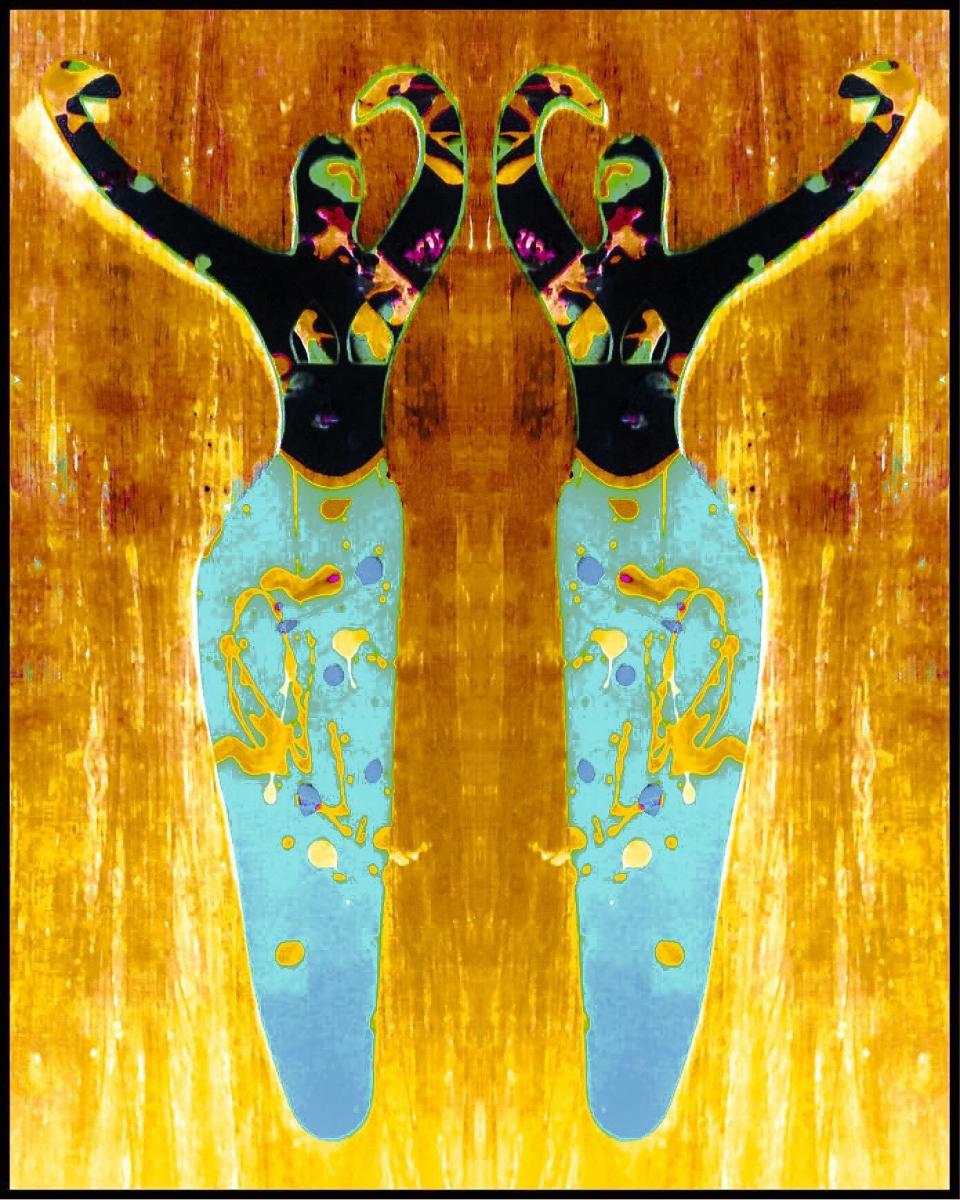But while the artwork was stunning to look at, the creative impetus and much of its decorative appeal stems from the concept of ma’at, or balance and harmony, and the importance the ancient Egyptians attached to symmetry. Ma’at, which was thought to comprise the very fabric of creation passed down when the Gods instilled order on a chaotic universe, evolved over the decades and remained the ethical and moral foundation of the Egyptian people.
This timeless and universal concept of the search for harmony and balance is captured in Malakoot, an art project by Russian-Egyptian visual artist Dina Shalaby, who, driven by a renewed appreciation of her national patrimony following an illustrious career in international management consulting that left her searching for a more balanced way to achieve happiness and fulfillment, mixed media and her “deep passion for pharaonic Egypt to create pieces inspired by the past and with a story for the future.”
“The call for Malakoot, came to me a few years ago after I had spent more than a decade intensely pursuing success in education, career, travel and intellectual endeavors. I had studied journalism in Egypt, international business in Italy, worked in international management consulting in both countries and eventually in the US. It was a thrilling journey and looking back I wouldn’t change a thing except maybe for the unsustainable rhythm and intensity that came with it. The strive and the conditioning of modern life to achieve more, faster, better. To stay on top of your game. To be the center of your universe. To keep running and there, at the end of that race, happiness is waiting, wearing the hat of success and achievement. But at what price? Very likely a burnout,” Shalaby, who held her solo debut exhibition in Cairo and took part in several group exhibitions, told Majalla.

Dina studied journalism in Egypt, international business in Italy, worked in international management consulting in both countries and eventually in the US. But despite the rewards of her success, the rhythm and intensity that came with it were unstainable, she explains.
“The strive and the conditioning of modern life to achieve more, faster, better. To stay on top of your game. To be the center of your universe. To keep running and there, at the end of that race, happiness is waiting, wearing the hat of success and achievement.”
Feeling like she could no longer could, nor wanted, to sustain that race, Shalaby felt the need for a deep change. “Something was missing. I quit my job and, oh madness, I had no clear plan of what I would do next. I only knew I needed time and hopefully, a new soul,” she added.
Immersing herself in art came as a natural answer, for it had always been her companion. But what surprised Dina was that unexplainable urge to dive back into the art of Ancient Egypt and explore all its complex layers. “Something was telling me that this is where I would find the answer I was looking for. Otherwise how could they have achieved all these puzzling material and spiritual feats and lasted for so long?” she said.
With every piece of Ancient Egyptian art that she put on paper in a new light, Shalaby’s answer became clearer and clearer: “there was a different path to happiness and success and it’s the one Ancient Egyptians walked. And that was a story I wanted to tell.”
After mining for the gold nuggets of wisdom contained in Egypt’s past, Shalaby became particularly inspired by the Egyptians’ emotional intelligence and moral philosophy that resulted in a strong ethic in the ordering and harmonisation of one’s life, flavoured with an attitude of benevolence and a prevailing sense of balance that is an indispensable basis for higher wisdom.

“The ancient Egyptian civilization has achieved what no other could, not even ours. Their architectural genius, for one, is still puzzling. But what was an even bigger achievement is the moral anchoring they developed and that guided their actions: a value system and a life model where balance was Law. Where living in harmony and being in touch with the inner self and the outside world were the measures of happiness, success and a person’s worth,” she said.
“I fell in love with their way, the depth of their perception and the elegance of how they expressed it all. How they achieved integrity by harmonizing opposites, substituting competition and conflict with complementarity and thus achieving the oneness of practicality and spirituality, the masculine and the feminine, love and wrath, intellect and intuition. How finely they understood the human psyche and addressed the core drivers of a human soul: the need for love and protection, the healing power of gratitude, the creative power of mind and intention. So many moving pieces, always in perfect harmony, singing the same song. Thousands of years have passed but everything about their philosophy feels as relevant as ever, so universal and timeless.”
“I have my answer now and a new soul. All the moving pieces of my story are in harmony now and sing the same song in my heart. I try to convey that through my art and celebrate the minds and hearts that led me to it. May we all find our answers!”










